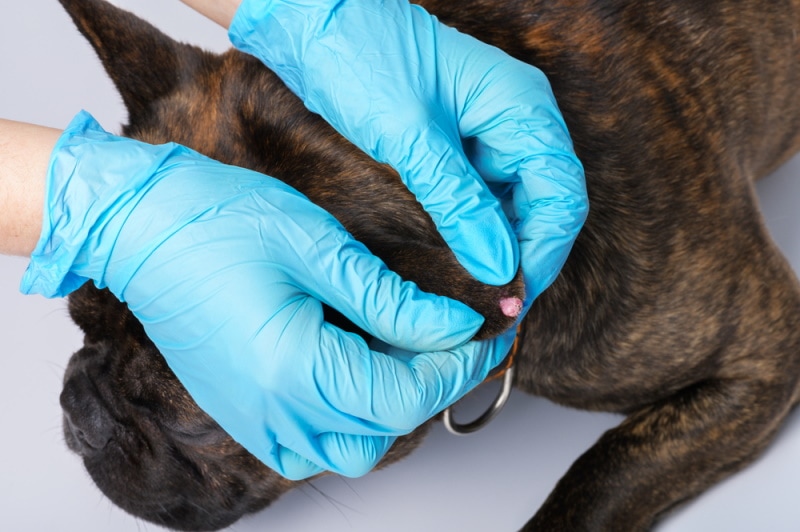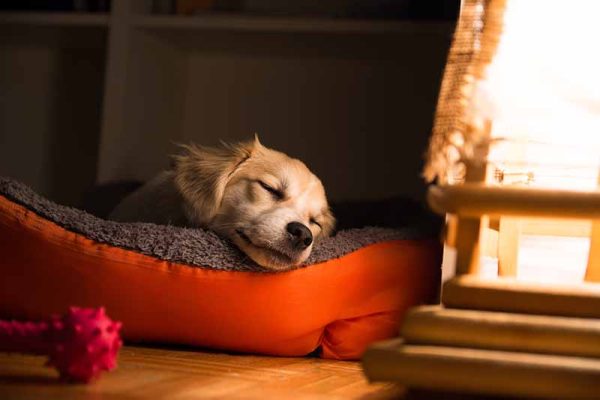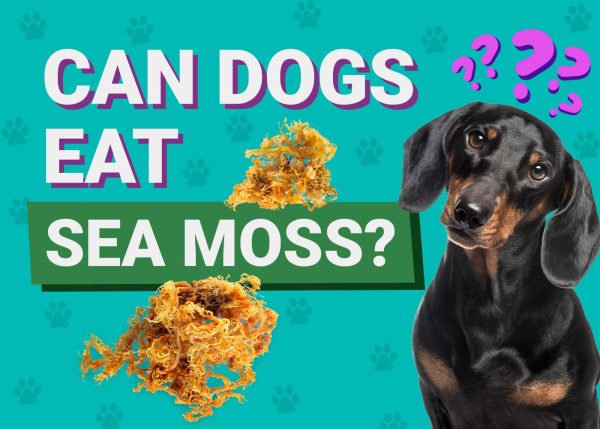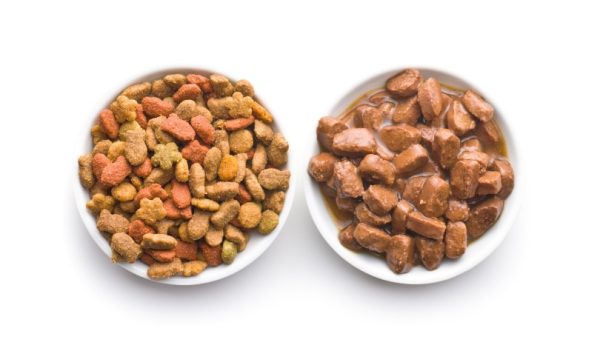Dogs are prone to developing all sorts of lumps and bumps. Papillomas, known as warts, are benign and fairly common tumors that develop in young dogs, though dogs of any age can be affected. But what does it mean, and what do you need to know if your vet has told you that your dog has papillomas?
This article will explore what the condition looks like, how it is caused, as well as how to look after your pet once they have been diagnosed with papilloma.

What Is Papilloma?
Most people know papillomas as warts, and they are the same thing! Just as in people, almost all papillomas are completely benign and will resolve or disappear with time. In dogs, papillomas will commonly appear (fairly quickly) on the skin, muzzle, and lips. If you are very observant, you might even find them inside the mouth. Papillomas may appear as a single or solitary growth, but they typically arise in clusters.
Papillomas are caused by a particular type of virus (conveniently known as Papillomavirus), and treatment options will vary depending on the location, size, and progression of the tumors.
Papillomavirus (specifically, Canine Papillomavirus Type 1) causes a tumor to grow, known as a papilloma or wart. But what is a tumor? A tumor is a collection of abnormal cells; in this case, abnormal epithelial cells (the cells that make up skin). The tumor is contagious to other dogs, meaning any contact with abnormal tumor cells can cause the virus (and subsequently the tumor) to be transmitted.
Though some tumors may be described as malignant or nasty, papillomas are benign, meaning they rarely spread internally or cause any signs of ill health.

What Are the Signs of Papilloma?
Of course, if your dog has a lump or growth, this does not immediately mean that it is showing signs of papilloma. Papillomas affect particular groups of dogs and have a fairly distinct appearance. We have described common signs of papillomas below.
If the growths on your dog appear similar to the description, this could be a sign that they have papillomas.
- Papillomas appear fairly quickly, typically on the skin around the lips and muzzle. However, they can appear anywhere on the body, including in the mouth and gums, as well as on legs and in between toes.
- Papillomas have a typical “cauliflower” or roughened appearance, though they will occasionally have a smooth surface. The appearance can change if the lump is traumatized, either accidentally (by knocking it on something) or deliberately (by licking it constantly!).
- Papillomas often appear in clusters or multiples, though they can be singular
- Papillomas will not usually make your dog feel unwell, lose their appetite, or show any signs of pain. The exception is if the papillomas are in the mouth and causing difficulty eating.

What Are the Causes of Papilloma?
A couple of factors are at play when a dog develops papillomas:
Being Immunocompromised
The first thing to note is that Papillomavirus does not usually affect healthy adult dogs. Dogs with papilloma are typically immunocompromised, meaning their immune system is not functioning at full capacity.
Most vets will agree that dogs with papillomas or warts will fall into one of three categories:
- Puppies or young dogs with a “naïve” immune system (usually less than 2 years of age)
- Immunocompromised dogs with an auto-immune disease or systemic illness
- Old dogs that develop papillomas with age, as the virus “pops back up”
Viral Infection
If a dog becomes infected with Papillomavirus and fits into one of the above three categories, there is a good chance that he or she will develop warts. But how do they come into contact with Papillomavirus? This is typically by direct contact with a papilloma of another dog after playing with each other and licking.
It can also be transmitted through “fomites”, which are inanimate objects that have encountered a papilloma. Food bowls, water bowls, soft toys, and bedding are the most common culprits. It is worth noting that Papillomavirus is very durable in the home environment and can last for weeks on certain surfaces.

How Do I Care for a Dog with Papilloma?
This depends partly on whether you are managing your dog at home or if your dog will be staying at a vet hospital for treatment. Most dogs are managed at home—and successfully! Remember, most dogs (unless badly immunocompromised) will spontaneously resolve the papillomas within two or three months as they build up immunity.
Young dog or puppy who is otherwise healthy
No specific treatment is usually required. Monitor the warts for growth or any signs of trauma or ulceration. Ensure toys, bedding, and food/water bowls are not shared with other dogs. Do your best to minimize play with other dogs who may be at risk.
Dog has an illness or is immunocompromised leading to papilloma
Here, treatment will depend largely on the underlying condition. Always be guided by your veterinarian, and do not try to cure the papillomas yourself.
If you need to speak with a vet but can't get to one, head over to PangoVet. It's our online service where you can talk to a vet online and get the advice you need for your pet — all at an affordable price!

Dog is healthy but papillomas are causing infection or discomfort
Discuss with your veterinarian to decide what is best. The main options are surgical excision (cutting out the lumps under general anesthetic) or medical management. Medical management can be with interferon-alpha (an antiviral medication) or, alternatively, immunosuppressive treatments.
Some dogs will also need antibiotics to help treat an infected papilloma and anti-inflammatories to help relieve discomfort.

Frequently Asked Questions
Can papillomas be transmitted to me or my children?
No. Papillomaviruses are species-specific, meaning that Canine Papillomavirus, which is causing the warts on your dog, cannot “jump across” to you or anyone you know. For this reason, they cannot be transmitted to cats, rabbits, horses, or any other species of pet you may have!
As we mentioned, however, Canine Papillomavirus can be transmitted to other dogs via rough play, licking, or fomites.
How does a vet actually diagnose papilloma?
Often, a vet will be confident that your dog has papilloma based on a physical examination and the appearance of the growths. Two other tests may be conducted to establish a diagnosis:
- Fine needle aspirate. This involves placing a needle into the suspect growth and sucking up a sample of cells. These cells can be examined under a microscope to see if they are supportive of papilloma, or if they look like something different. This test is known as “cytology”, and though it is very helpful, it will not definitively diagnose papilloma.
- Biopsy. This involves cutting out a small wedge of tissue, usually under anesthetic or heavy sedation. The sample is sent to a veterinary pathologist for interpretation (“histopathology”). This is the only way to definitively diagnose papilloma.
Will my pet make a recovery?
Most healthy dogs will clear themselves of the warts within two or three months. Generally, as they have mounted a strong immune response to the virus, the papillomas will not return, although some senile dogs will develop papillomas again.


Final Thoughts
Papillomas are benign tumors of the skin and muzzle caused by a dog-specific virus. There is no risk of human infection, and most dogs will cure themselves of the warts within a few months. If the warts are causing discomfort or becoming repeatedly traumatized, your veterinarian will discuss the options of surgical or medical management.
As always, we recommend arranging a consultation with your vet if you have any concerns about your dog or if you suspect that your dog has developed papillomas.
See Also:
- Dog Wart vs Skin Tag: Vet-Reviewed Differences Explained
- Histiocytoma in Dogs? What It Is, Causes & Signs (Vet Answer)
Featured Image Credit: Malikov Aleksandr, Shutterstock


















